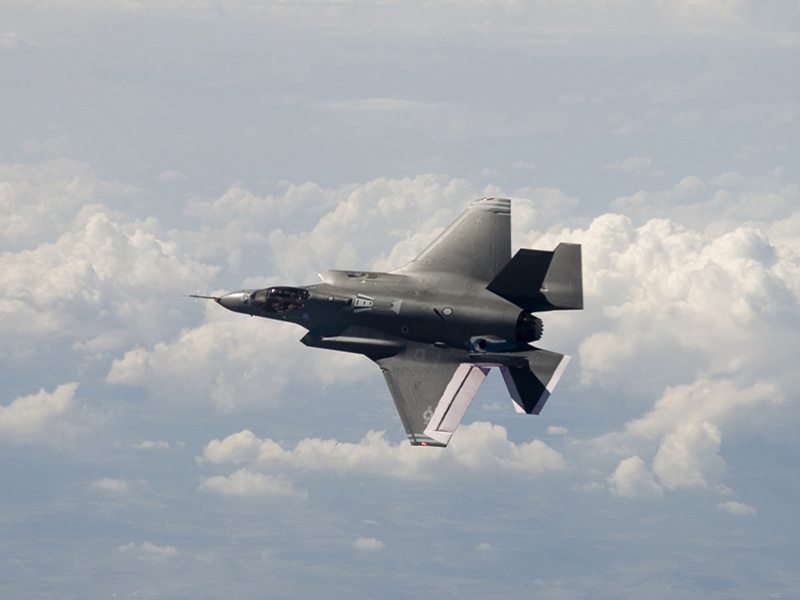As part of the Army’s Net Zero Operational Energy program, Soldiers from Europe’s 173rd Airborne Brigade Combat Team learned to operate and maintain multiple hybrid-power management systems.
The 173rd, headquartered in Vicenza, Italy, received the specialty training as part of its Mission Rehearsal Exercise, or MRE, to prepare for an upcoming deployment to Afghanistan. The MRE is being conducted at Hohenfels Training Area in Germany, March 6-22.
The Army’s Rapid Equipping Force, known as REF, provided the specialty training through its Energy to the Edge, or E2E program, which supports small tactical units operating at remote locations with suites of energy harvesting, power management and distribution systems.
“The 173rd allowed us to catch someone in the right timeline. It was the first opportunity to actually train a unit at home-station, look at the equipment during their CTC [combat training center] rotation, and actually take it into theater and put it to use,” said Col. Peter A. Newell, director of the REF.
The 173rd’s training schedule, deployment timeline and their future location at a forward operating base, known as a FOB, in Afghanistan made the unit an ideal choice for E2E training, said Newell. The equipment should solve some unique challenges, he said, because there are fewer forces in theater and the environment is rapidly changing. Small combat outposts, or COPs and FOBs, may be more geographically isolated from higher headquarters, making resupply missions more difficult.
The REF’s mission is to provide urgent capabilities to Soldiers employed globally by harnessing current and emerging technologies to improve operation and effectiveness. For its E2E initiative, REF has partnered with program managers from Mobile Electric Power and Soldier Power, and the Army Research, Development and Engineering Command to provide portable mission power to Soldiers at combat outposts and FOBs.
The Soldiers trained on the Advanced Medium Mobile Electric Power Source , or AAMPS, a replacement generator for the Tactical Quiet generator, which trainers say should increase energy efficiency by more than 20 percent.
“We’re training to use the equipment and perform maintenance, such as replacing parts and tracing wires,” said Spc. Robert F. Martin, a generator mechanic from 2nd Bn., 503rd Inf. Regt. “This will mean less required manpower, more fuel efficiency and fewer parts to actually fix, so you won’t have to bring Soldiers out to COPs.”
Martin said it’s valuable to the unit. “The generators don’t wet stack, which means the shelf-life is longer. The generators won’t break down as often, he said.”
“The generators may be connected to solar panels that store energy produced by the sun and allow the batteries in the generator to rest when it reaches capacity, which reduces equipment run time, man-hours and maintenance costs,” said Brandon W. Bloodworth of Barbaricum, the contract agency in partnership with the REF. Bloodworth travels to remote bases providing energy assessments and recommendations to improve operational readiness, safety and comfort.
“We’re looking at energy to increase capability,” he said.
The REF and its partners plan to deploy engineer advisers, like Bloodworth, to COPs and FOBs to assist the units as they improve energy efficiency. The advisers will reduce some of the burden placed on the Soldiers.
Although fuel saving is one benefit of the program, trainers say the initiative is about more than cost savings. For example, there are between 40 and 70 personnel stationed at a COP. Sustaining the energy requirements, not including food and water, means there needs to be at least 6,000 gallons of fuel per month.
The REF and its partners are anticipating the needs of the units based on the current environment, but Newell says a change in culture has to happen to make it work.
“Understanding power and energy management at the small-unit level, platoons and companies, is a cultural change and not something we’ve done in the Army,” said Newell. “Units may experience very long logistic resupply requirements on roads that are a great threat to the Soldiers that have to drive those routes. The guy that is training the Afghan National Army is the same guy that has to secure the valleys and clear the roads for the dangerous convoy movement to sustain the COP or FOB.”
Newell said, by conserving power, the dangerous 10-day resupply missions are reduced, allowing more Soldiers to focus on the combat mission, while staying off dangerous roads.
“This initiative is not just about saving-fuel,” said Newell, “It’s about saving lives.”
The 173rd ABCT receives the new equipment in theater.
This month, the unit is training with multinational forces from Albania, Bosnia, Bulgaria, the Czech Republic, Romania, Serbia and Slovenia at the Joint Multinational Readiness Center in Hohenfels, Germany. The JMRC is the Army’s only overseas combat training center, and regularly trains U.S. and multinational forces for missions in Afghanistan.
For more information or to learn more about the Joint Multinational Training Command’s unique multinational training mission, please visit the JMTC web site: http://www.hqjmtc.army.mil.











